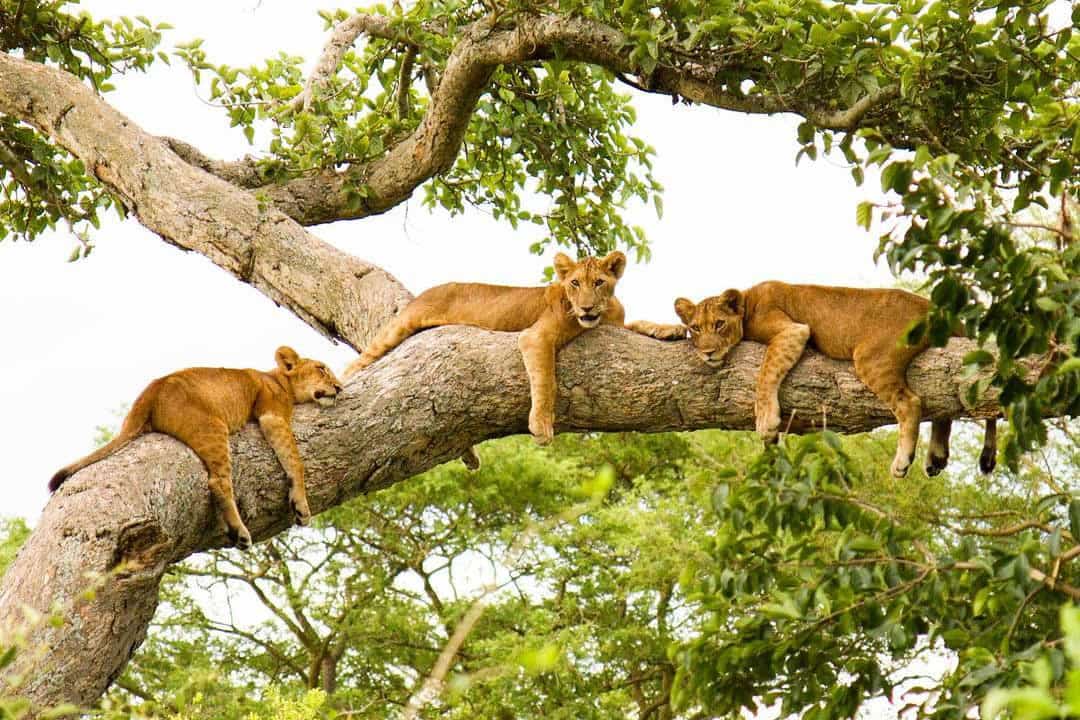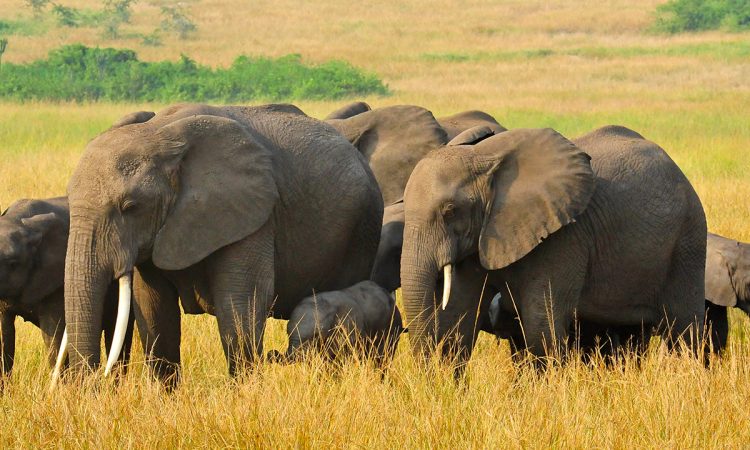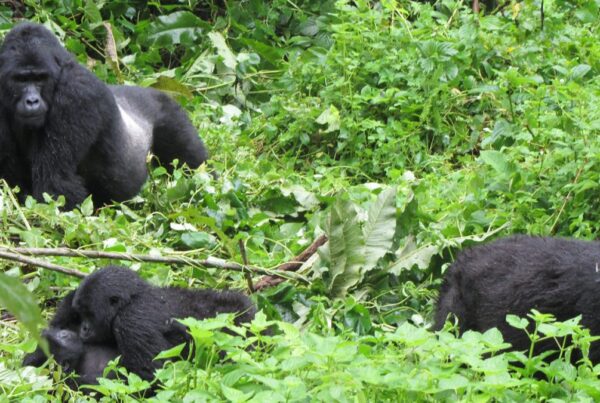Top 10 Animals to See in Queen Elizabeth National Park
Where Africa’s Wild Heart Beats Strongest
In the heart of western Uganda lies a place where nature has written its story in broad, sweeping strokes of wilderness, a land where the savannah meets crater lakes, where rivers feed swamps, and where forests conceal secrets whispered through rustling leaves. This is Queen Elizabeth National Park, a crown jewel in Uganda’s conservation heritage and one of Africa’s most celebrated safari destinations.
Covering nearly two thousand square kilometers of diverse terrain, the park is home to one of the most impressive collections of wildlife on the continent. It is a landscape where predators roam, herds gather, and birds fill the skies in kaleidoscopic variety. But beyond the sheer volume of life it sustains, Queen Elizabeth National Park has gained global renown for the richness of encounters it offers. Here, every drive, every walk, and every boat safari becomes a journey through the pages of a living encyclopedia of nature.
Among the hundreds of species that call the park home, ten stand out as iconic. These animals not only embody the spirit of the Ugandan wilderness but also represent the unforgettable highlights for which travelers cross oceans to witness. From tree-climbing lions to elusive leopards, from vast elephant herds to playful chimpanzees, each encounter tells a story of survival, adaptation, and beauty. This guide explores the top ten animals to see in Queen Elizabeth National Park, offering not only descriptions of their appearance but also deeper insight into their behavior, habitats, and significance.
The Tree-Climbing Lions of Ishasha
No animal encounter in Queen Elizabeth National Park is more unique than that of the tree-climbing lions of Ishasha. Found in the park’s southern sector, these lions have baffled scientists and enchanted travelers by developing the unusual habit of resting in the branches of large fig trees. While most lions elsewhere spend their days sprawled across the ground, Ishasha’s prides take to the treetops, draping their golden bodies across branches with effortless grace.
Several theories explain this behavior. Some suggest that climbing offers relief from the searing heat of the savannah, providing a breeze and escape from biting insects. Others argue it grants lions a vantage point from which to scan for prey. Whatever the reason, the sight of Africa’s most iconic predator in the branches of a tree is one of the park’s defining spectacles.
The lions of Ishasha primarily prey on Uganda kob, buffalo, and warthogs. Their role as apex predators keeps herbivore populations in check, ensuring the ecological balance of the park. To witness them in their treetop thrones is not only a highlight of any safari but also a reminder of nature’s endless adaptability.
African Elephants: Gentle Giants of the Plains
The African elephant, the largest land animal on Earth, roams freely through Queen Elizabeth National Park in significant numbers. Their massive forms are often seen moving gracefully across savannahs, congregating at the water’s edge, or wandering near crater lakes. Families of elephants, led by wise matriarchs, display remarkable social bonds, with calves protected by the herd and older members guiding the group’s movements.
In the heat of the day, elephants often march toward the Kazinga Channel, where their drinking, bathing, and playful splashing create extraordinary moments for travelers on boat safaris. Their tusks, used for digging, stripping bark, and defense, serve as reminders of their vulnerability to poaching, though strong conservation measures have helped stabilize populations within the park.
To encounter elephants here is to feel both awe and humility. Their sheer size commands respect, but their gentle interactions with one another inspire a sense of shared kinship between humanity and nature.
The Elusive Leopards
In the shadowed corners of Queen Elizabeth National Park dwell the leopards, creatures of stealth and elegance. Sleek, muscular, and adorned with rosettes across their golden coats, leopards are among the most elusive animals to spot. Their solitary nature and nocturnal habits mean they are rarely seen, yet the park provides excellent opportunities for sightings, particularly during early morning or evening drives.
Leopards thrive in the park’s mixed habitats, from savannahs to forest edges. They often drag their kills into the branches of trees, a behavior that sets them apart from other predators and ensures their meals are safe from scavengers. Antelopes, monkeys, and warthogs form the bulk of their diet.
A glimpse of a leopard slinking through tall grass or resting on a low branch is considered one of the most rewarding safari experiences. Their presence speaks to the park’s intact predator-prey dynamics and to the enduring mystery that defines the African wilderness.
The Hippos of the Kazinga Channel
The Kazinga Channel, connecting Lake George to Lake Edward, is home to one of the world’s largest concentrations of hippopotamuses. These immense animals, despite their seemingly sedentary lifestyle, are among Africa’s most formidable creatures. During the day, they wallow in the water, their massive bodies submerged save for ears, eyes, and nostrils that peek above the surface. At night, they emerge to graze, leaving trails of cropped grass that mark their passage.
Boat safaris along the channel reveal pods of hippos clustered tightly together, grunting, snorting, and occasionally yawning wide to display fearsome tusks. Though they appear comical, their territorial behavior and immense strength remind visitors of their power.
The hippos of Kazinga Channel are central to the park’s ecosystem, influencing plant growth along the riverbanks and supporting aquatic life. For travelers, they provide endless fascination, embodying both the tranquility and latent ferocity of Africa’s waterways.
The African Buffalo: Symbols of Strength
Among the most common yet imposing animals in Queen Elizabeth National Park are the African buffaloes. These sturdy bovines, with their sweeping horns and formidable presence, move in vast herds across the plains. Their sheer numbers and unpredictable temperament make them one of Africa’s most respected animals, even among predators.
Buffaloes often gather at water sources, their dark bodies crowding the channel banks alongside hippos and elephants. Lions frequently target them, though buffaloes are far from easy prey; their strength and herd solidarity often repel even the most determined attacks.
They represent resilience and unity, a reminder of how survival in the wild depends on collective strength. Their ubiquity ensures that no safari in Queen Elizabeth National Park feels complete without the sight of these powerful creatures.
Uganda Kob: The Iconic Antelope
No animal is more symbolic of Uganda than the Uganda kob, a graceful antelope that roams in large numbers across Queen Elizabeth National Park. With reddish-brown coats, elegant horns in males, and a bounding stride that conveys energy and agility, the kob embodies the vitality of the savannah.
They are most abundant in the Ishasha and Kasenyi plains, where their presence attracts predators such as lions and leopards. Males establish leks, or breeding territories, where they display dominance and attract females, creating fascinating social interactions for observers.
The Uganda kob holds cultural as well as ecological importance. It is featured on Uganda’s coat of arms, symbolizing the country’s wildlife heritage. To watch them in their natural environment is to connect with Uganda’s identity and to appreciate the role of antelopes in sustaining predator populations.
Chimpanzees in Kyambura Gorge
While the savannah dominates much of Queen Elizabeth National Park, the Kyambura Gorge, often called the “Valley of the Apes,” reveals a completely different world. Here, dense forests conceal one of the park’s most intriguing inhabitants—the chimpanzee.
Chimpanzees in Kyambura Gorge live in small communities, displaying intelligence, tool use, and social behaviors strikingly similar to humans. Trekking into the gorge to encounter them is a profound experience, as their calls echo through the forest canopy and their movements demonstrate both power and playfulness.
These primates highlight the park’s ecological diversity, bridging savannah and forest ecosystems. They remind travelers that Queen Elizabeth is not only a place of open plains but also of hidden forests where close relatives of humanity thrive.
Nile Crocodiles: Masters of Stealth
Basking along the Kazinga Channel’s shores or lurking just beneath the surface are the Nile crocodiles, creatures whose lineage stretches back to prehistoric times. With armored bodies, powerful jaws, and a patience that borders on eerie, they are supreme ambush predators.
Crocodiles feed on fish, birds, and sometimes larger animals that venture too close to the water. Their sudden bursts of speed and crushing bite force make them a force to be reckoned with. Though often motionless, their presence adds drama to every boat safari, a reminder that danger in the wild can lie hidden just below the surface.
They play an essential ecological role, regulating fish populations and ensuring balance in aquatic systems. For travelers, they offer both fear and fascination, embodying the primal essence of the African wild.
Warthogs: The Quirky Grazers
Scattered across the grasslands and often seen trotting with tails held high are the warthogs, animals that combine comical appearance with surprising adaptability. With protruding tusks, bristly manes, and expressive faces, warthogs are among the most endearing creatures of the park.
They live in burrows, often occupying abandoned aardvark holes, and spend much of their time grazing on grasses. Despite their awkward looks, they can sprint with astonishing speed when threatened. Warthogs are commonly encountered on game drives, their presence adding both humor and character to the safari.
Their importance lies in their role as prey for predators, as well as their ability to aerate soil through digging. They remind visitors that even the less glamorous animals are indispensable threads in the tapestry of life.
Baboons and Other Primates
Adding to the diversity of Queen Elizabeth National Park are the olive baboons, highly social primates that roam in large troops. Their behaviors are complex, ranging from grooming rituals to vocal communication. They are often seen along park roadsides, boldly interacting with passing vehicles, a behavior that reflects both intelligence and opportunism.
In addition to baboons, the park shelters vervet monkeys and black-and-white colobus monkeys, each contributing to the richness of its primate population. These creatures underscore the ecological variety that sets Queen Elizabeth apart, where savannah, forest, and riverine environments intersect to support extraordinary biodiversity.
The Diversity Beyond the Top Ten
While these ten animals represent the highlights, Queen Elizabeth National Park’s wildlife tapestry is far broader. With more than ninety-five mammal species and over six hundred bird species, the park is a paradise for naturalists. From servals and hyenas to flamingos and shoebill storks, every journey through the park reveals new wonders. The top ten are simply a gateway into a realm where life thrives in astonishing abundance.
A Symphony of Wildlife Encounters
Queen Elizabeth National Park is more than just a protected area; it is a stage where nature performs its grandest symphony. To see the tree-climbing lions of Ishasha, the majestic elephants, the stealthy leopards, the playful chimpanzees, and the countless other species is to witness Africa in its purest form. Each animal encounter adds a note to the melody of the park, a melody that resonates long after the safari ends.
For travelers, these encounters are not simply sights to be checked off a list; they are transformative experiences that inspire awe, respect, and a renewed connection to the natural world. The top ten animals embody the park’s spirit, but it is the harmony of all species together that makes Queen Elizabeth National Park one of Africa’s greatest treasures.
To embark on this unforgettable journey and ensure an experience that is immersive, insightful, and responsibly managed, it is highly recommended to book Africa tours and safaris through WildHorn Africa. With unmatched expertise and dedication to excellence, WildHorn Africa guarantees that every safari becomes a timeless memory of Uganda’s wilderness.





 WildHorn Africa – Authentic and unforgettable tours across Africa, guided by local experts who know the land, wildlife, and culture best.
WildHorn Africa – Authentic and unforgettable tours across Africa, guided by local experts who know the land, wildlife, and culture best.


